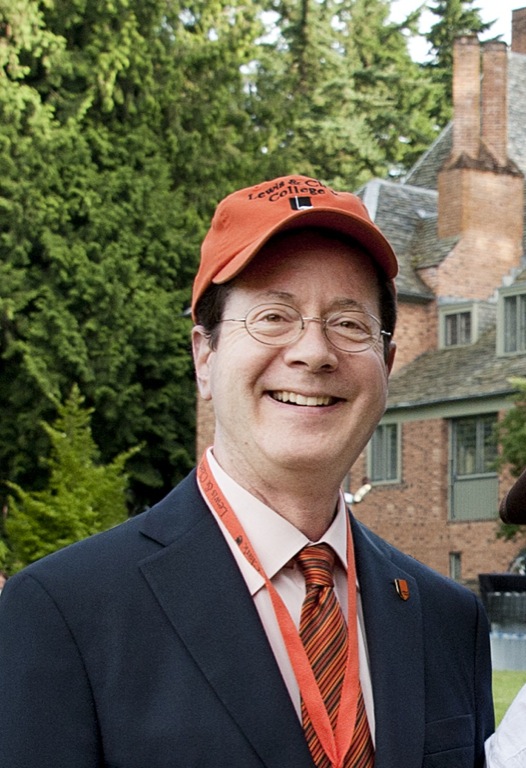The Liberal Arts Edge
Open gallery

“When you get out into the workforce, you have to have flexibility. What I learned at Lewis & Clark really gave me a leg up,” Ho‘onani Andermann BA ’07 said during our Reunion Weekend in June. She’s a clinical analyst and product informatics specialist at TeamPraxis, a provider of healthcare IT solutions in Honolulu.
Words—and outcomes—like these are the kind that make a president’s heart sing. But I always ask myself, How does what we do measure up against the education provided by other types of schools?
First-rate, based on what I heard at this summer’s annual meeting of the Annapolis Group, a consortium of 130 independent liberal arts colleges. My colleagues and I had commissioned a national study, a customer satisfaction survey of sorts, to learn what our graduates value about their college experience and what they do with it. James Day, the study’s director, presented the findings at our conference. The results are more than encouraging.
Among the key findings: Liberal arts students are academically anchored—not adrift—and community minded. They appreciate supportive learning environments and teaching that stretches their abilities. They value strong mentoring, abundant intern and community service opportunities, and working directly with professors rather than graduate assistants.
So, what is the ultimate liberal arts payoff? Alumni declare they are well prepared for both graduate study and the workplace, having developed skills vital to scholarly inquiry, career advancement, and life as public citizens.
High rates of satisfaction and positive outcomes are reaffirming, but it’s in the study’s comparisons that we find the liberal arts’ greatest distinction. By also surveying graduates of the nation’s larger private and public colleges and universities, the research weighs benefits and outcomes across a spectrum of educational environments.
And in the comparative analysis, the liberal arts finish at the head of the class. As James Day notes, “On virtually all measures known to contribute to positive outcomes, graduates of liberal arts colleges rate their experience more highly than do graduates of public or private universities.”
Additionally, our graduates are more likely than students at other schools to complete their degrees in four years or fewer, which reduces overall costs and allows students to begin earning sooner.
At Lewis & Clark, and liberal arts schools around the nation, students hone the critical thinking, global awareness, and agile minds so valued
by businesses and so crucial to entrepreneurship and innovation. This is the flexibility, the leg up, that Ho‘onani refers to.
And our undergraduate students have an added benefit—two in fact: their proximity to our Graduate School of Education and Counseling and our Law School allows them access to a variety of lectures and other events, as well as interaction with faculty, staff, and students from both campuses.
While the Annapolis Group findings give us much to celebrate, we cannot become complacent. These results frame the decisions we must make to maintain our advantages. We should not forestall change but rather ensure that it is grounded in our mission: to teach what is known, to discover what is not, and to shape global citizens.
And we must become even more resourceful and creative to expand access and strengthen financial aid, ensuring that education is an achievable opportunity for students from all backgrounds.
Just how long-lived are the benefits of the liberal arts? Richard Metzler, a chemistry major from the class of 1952, put it this way while attending his 60th reunion this summer: “I learned to learn at Lewis & Clark. I learned to exercise my mind. I’m so glad you gave me the opportunity
to go back, to go forward.”
Now that’s an outcome that never gets old.
Barry Glassner
President
More L&C Magazine Stories
Lewis & Clark Magazine is located in McAfee on the Undergraduate Campus.
MSC: 19
email magazine@lclark.edu
voice 503-768-7970
fax 503-768-7969
The L&C Magazine staff welcomes letters and emails from readers about topics covered in the magazine. Correspondence must include your name and location and may be edited.
Lewis & Clark Magazine
Lewis & Clark
615 S. Palatine Hill Road MSC 19
Portland OR 97219

